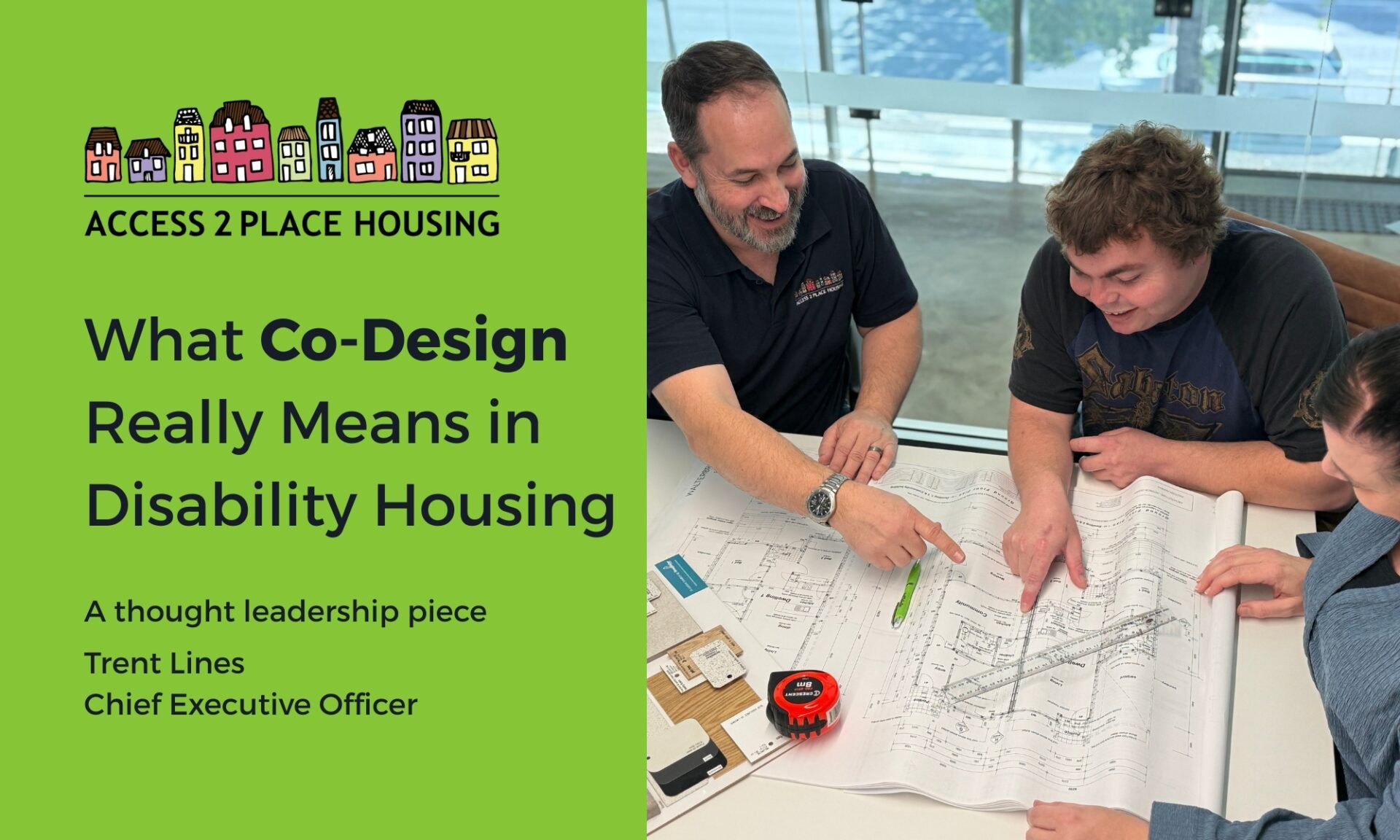What does Co-Design really mean in disability housing – and why does it matter?

Why Co-Design in Disability Housing Matters
In the evolving landscape of disability housing, the term co-design is often used – but not always understood. For organisations like Access 2 Place, co-design isn’t a buzzword. It’s a commitment to genuine collaboration, where people with lived experience of disability are not just consulted but are central to shaping the environments they call home.
At its heart, co-design in disability housing means shifting power. It’s about recognising that tenants are experts in their own lives. Their insights, preferences, and aspirations must inform every stage of the design process – from initial concept to final build. This approach ensures that housing is not only accessible but life-changing and tailored to individual needs.
In South Australia, tenant engagement in disability housing is gaining momentum, but there’s still work to be done. Too often, engagement is limited to surveys or tokenistic feedback sessions. True co-design goes deeper. It involves ongoing dialogue, trust-building, and a willingness to adapt. It means architects, support providers, and housing providers sitting alongside tenants, listening and learning.
Access 2 Place’s Commitment to Co-Design
Why does this matter? Because when people with disability are actively involved in designing their homes, the outcomes are transformative. Spaces become safer, more functional, and more empowering. Tenants feel a sense of ownership and pride. Communities become more inclusive.
At Access 2 Place, we’ve seen firsthand how co-design leads to better housing outcomes. Our collaborative design philosophy is focussed on the lived experience of the participant. We don’t just build homes—we build relationships. And through those relationships, we create environments that reflect the diversity and richness of the people who live in them.
As Australia continues to invest in disability housing, it’s vital that co-design remains at the forefront. Not as a checkbox, but as a guiding principle. Because when we design with people – not for them – we create more than just buildings, we create a forever home.